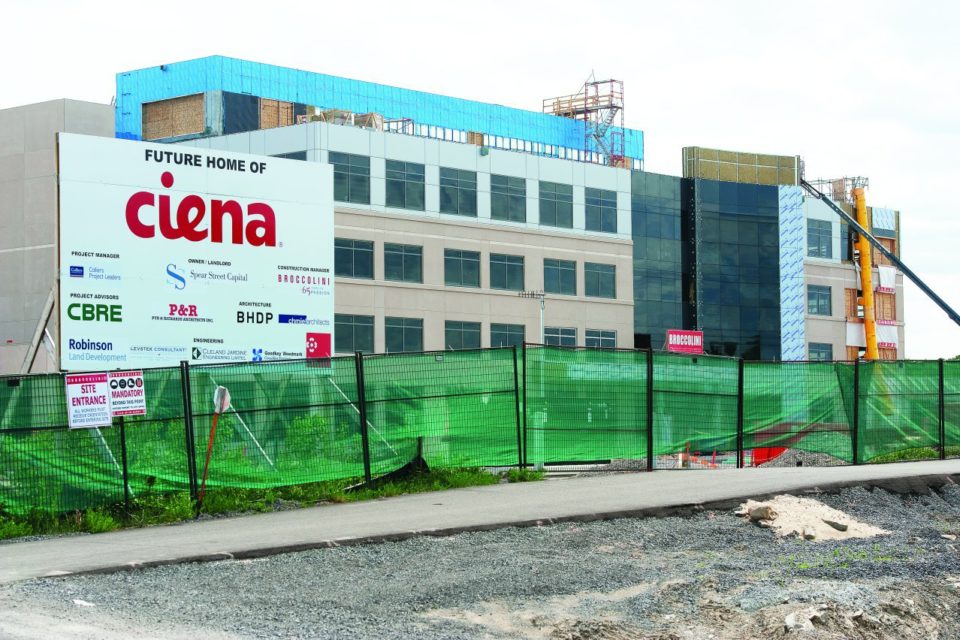Building the Capital: Disruption and Collaboration

Kanata North builds on the past as it thrives in the present
By Kaarina Stiff
The landscape in Kanata North isn’t what it used to be, but don’t let that fool you. The community has recovered from the telecommunication industry’s troubled days of the early 2000s, and is now home to more than 500 companies with over 21,000 skilled employees that serve a broad range of sectors.
“Disruption across all kinds of industries is making people look for new ways of doing things,” says Pat White, acting managing director at L-SPARK, an incubator and accelerator for Software as a Service companies. “All the companies we’ve worked with identified something they can disrupt in a business model because they found a better way to do it.”
This innovative thinking has fuelled growth for technology companies that already had strong roots in the region, such as Ciena Corp., which is building a new campus in Kanata North to house 1,500 local workers. Disruption has also opened doors for smaller firms to compete. The convergence of all this talent in a single place has turned the community into a hotbed of groundbreaking work, but it didn’t all happen by accident.
“A huge part of our success has come from building relationships between organizations to create new opportunities,” says Jenna Sudds, executive director of the Kanata North Business Association.
When the association launched in 2013, it didn’t have a blueprint to follow. As the only business improvement association in Canada to represent a technology park, it caters to a unique mix of skills that doesn’t exist anywhere else. The community is predominantly high-tech, but the breadth of industries that have put down roots in the Kanata Research and Technology Park is surprising. Although it still has a strong telecom presence, software and data services follow closely behind, and the defence and life sciences sectors continue to grow.
Through trial and error, Sudds and her team have found creative ways to cultivate a strong sense of community. She also credits initiatives like L-Spark and the Centre of Excellence in Next Generation Networks (CENGN) for giving new players a chance to enter the market. CENGN, a national consortium of industry, academic and research leaders, is part of an elaborate ecosystem in Kanata North that has dedicated itself to nurturing talent in a way that benefits the entire community.
“Disruption is happening,” says Kelly Daize, CENGN’s vice president of business development and marketing. “CENGN provides a cluster of commercialization expertise to help ICT companies grow, and establish Canada as a leader in next generation networking.”
Among other things, CENGN hosts an internationally recognized data centre and infrastructure that companies can use to test their products. Having access to this type of facility is a major draw for the specialized talent that Kanata North is built on.
The residential community in Kanata North is also thriving. More than 50 per cent of employees in the community live within five kilometres of their work, which is important to a young generation of workers who want a different kind of life-work balance than their parents had. Attracting and retaining that talent is critical for Kanata North to continue to thrive. In the long haul, Sudds says, that means Kanata North needs to support the lifestyle that its employee base wants. So far, though, it’s working.
“The parking lots in Kanata are full again,” says Daize. “The companies may be different than they were ten years ago, but it’s vibrant again.”
Kaarina Stiff is an Ottawa-based writer and editor with expertise in environmental studies, public policy and writing for technology companies.






















